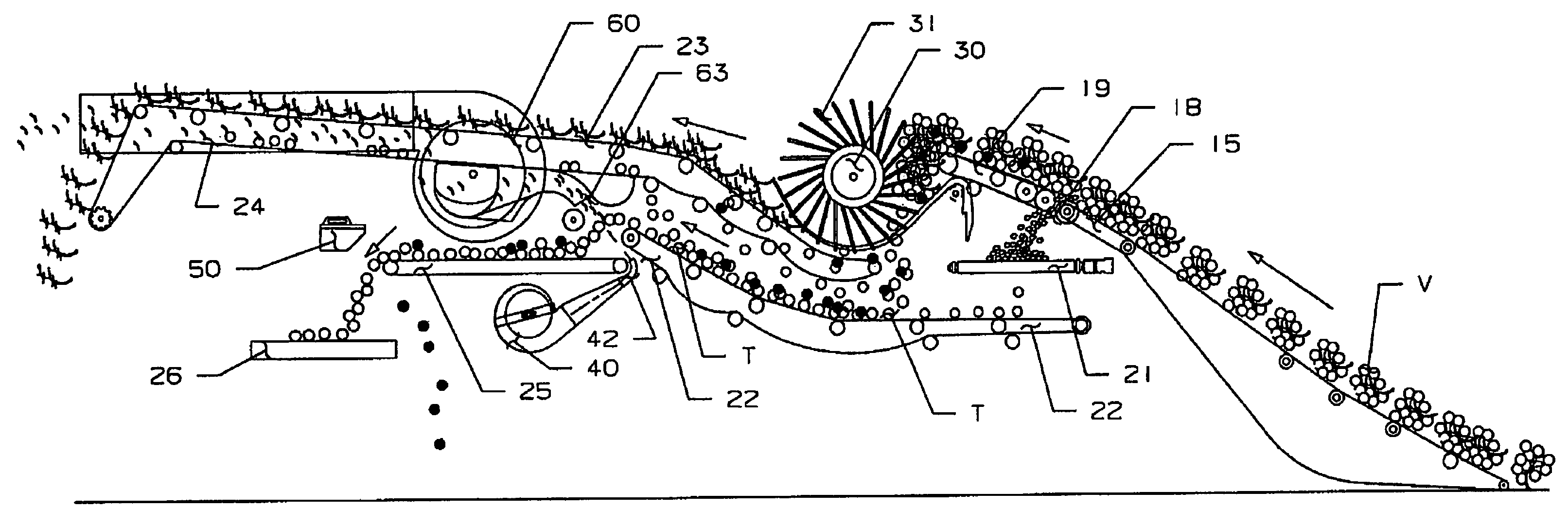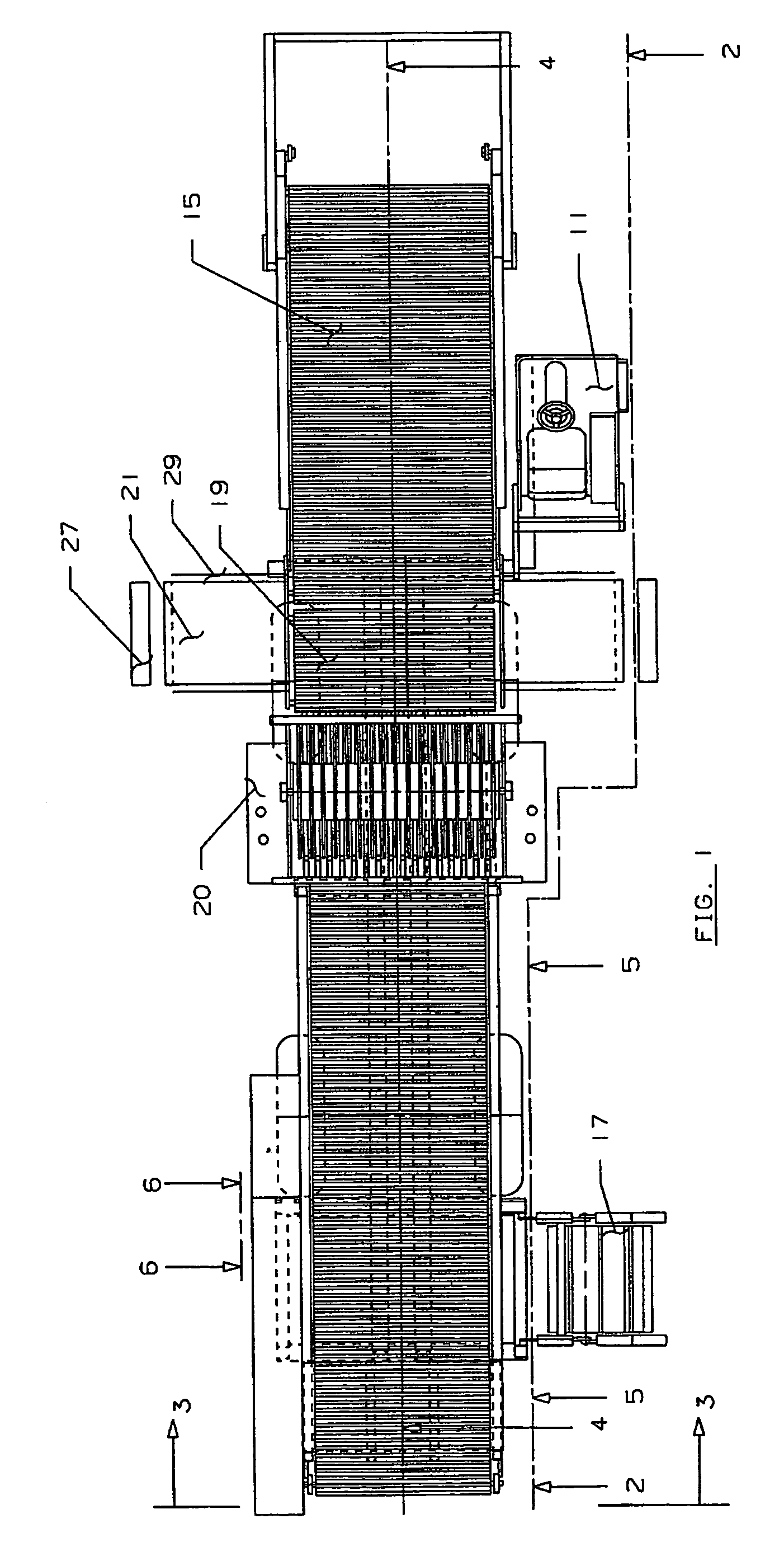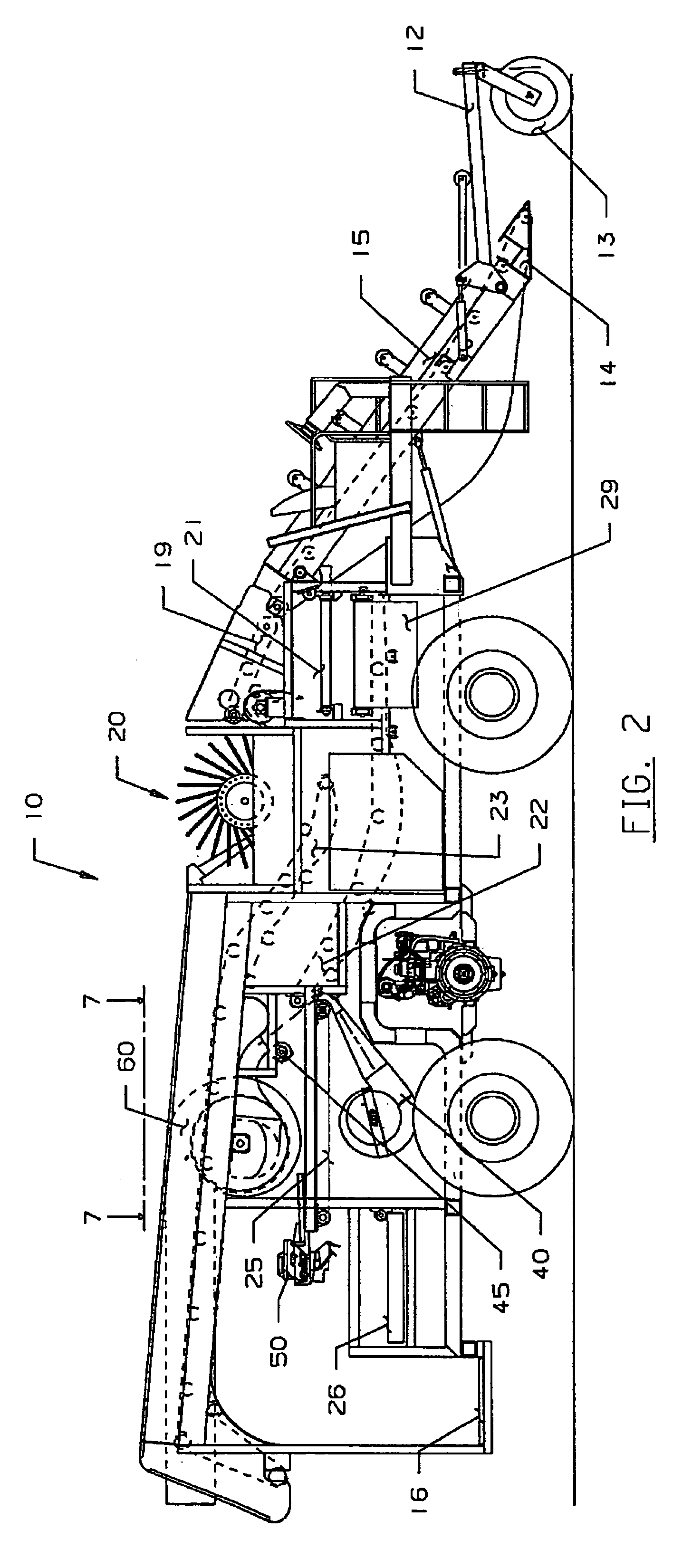Small scale tomato harvester
a technology of tomato harvester and small-scale, which is applied in the direction of digger harvester, agriculture, agricultural tools and machines, etc., can solve the problems of inefficient machine other aspects of the harvesting process, loss of suitable crops, and tedious manual harvesting and processing, etc., and achieve the effect of efficient removal of unwanted dirt, vegetation and debris
- Summary
- Abstract
- Description
- Claims
- Application Information
AI Technical Summary
Benefits of technology
Problems solved by technology
Method used
Image
Examples
Embodiment Construction
[0047]Referring to the drawings wherein like reference numerals designate like or corresponding parts throughout the several views, and referring particularly to FIGS. 1 and 2, it is seen that the illustrated exemplary embodiment of the invention is an apparatus and method for harvesting above-ground food plants grown in rows upon elongated planting ridges. The exterior components of the illustrated apparatus generally comprise a self-propelled vehicle body 10 having a driving compartment 11, an adjustable arm 12 with a pickup device 14 and conveyor 15, separator 20, optional sorting platform 16, and a discharging conveyor 17.
[0048]As indicated in FIG. 2, an adjustable arm 12 may be affixed to the front end of the vehicle body 10. The adjustable arm 12 may be any number of commercially available devices that allow the operator to adjust the position of the arm 12 relative to the ground, said position depending upon the characteristics of the particular crop harvested or its environm...
PUM
 Login to View More
Login to View More Abstract
Description
Claims
Application Information
 Login to View More
Login to View More - R&D
- Intellectual Property
- Life Sciences
- Materials
- Tech Scout
- Unparalleled Data Quality
- Higher Quality Content
- 60% Fewer Hallucinations
Browse by: Latest US Patents, China's latest patents, Technical Efficacy Thesaurus, Application Domain, Technology Topic, Popular Technical Reports.
© 2025 PatSnap. All rights reserved.Legal|Privacy policy|Modern Slavery Act Transparency Statement|Sitemap|About US| Contact US: help@patsnap.com



